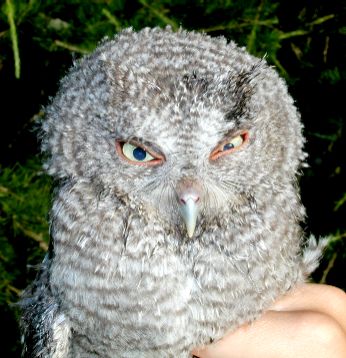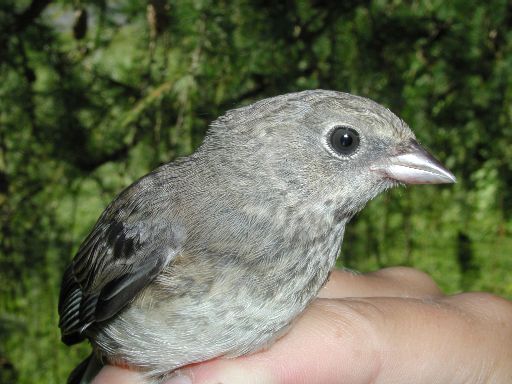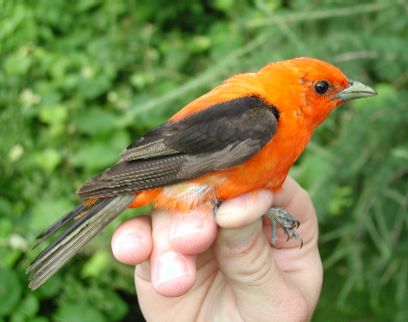

We're posting this week's totals a little ahead of schedule, because we've had a number of interesting captures that we wanted to share, not the least of which was the banding, on 7/11/01 of a bird that provided the 500,000th official banding record (includes over 400,000 original bandings plus almost 100,000 recaptures) for our program.
The banding this week continued to be dominated by large numbers of juvenile catbirds, phoebes, and Song Sparrows, as well as family groups of tanagers, thrushes, and redstarts from the surrounding forest. Some evening banding netted us our first Cliff Swallow in six years and a juvenile Eastern Screech Owl (below left). An unusual capture for us was a juvenile Dark-eyed Junco (below right). Juncos (of the southern Appalachian subspecies, Junco hyemalis carolinensis) nest at high elevations (>1800 ft.) near Powdermill, but are rarely encountered at lower elevations (the banding station is at 1300 ft.) before fall.


Unusual in another way was this orange variant SY male Scarlet Tanager.

At least one of the adult Least Flycatchers banded this week probably qualifies as our first "fall" migrant. It had moderate fat deposits, rating a score of "2" on our scale of 0-3.
Lastly, all of the Louisiana Waterthrushes caught this week were independent juveniles. At about 30-40 days post-fledging, most juvenile LOWAs stop receiving parental care and shortly thereafter leave their natal streams. While they complete their first fall molt of juvenal body feathers and wing coverts, and before they begin fattening for migration, they begin to explore areas up to several miles away from their natal stream--limited data that we have collected suggests that this is a critical time when young LOWAs make decisions about where they will return as breeding adults in the following year. This sort of "prospecting" for future territories during the post-fledging/pre-migratory phase may be a typical, if difficult to study, behavior of juvenile migratory songbirds.